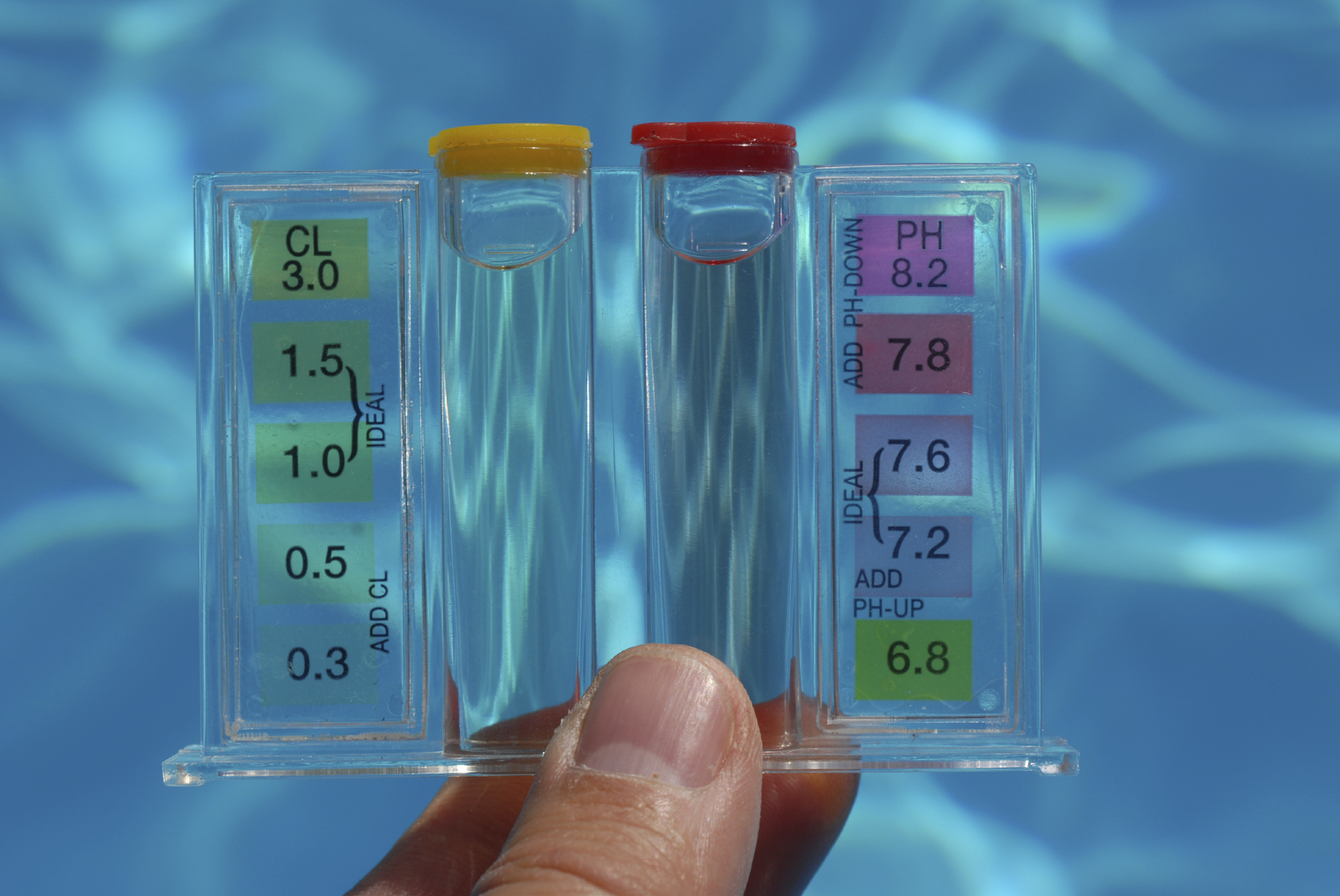
Pool Water Chemistry: Explaining the basics
To many pool owners, pool chemicals and the correct way to monitor and use them, can be a confusing exercise. Here are some of the basics about the use of chlorine, including salt generated chlorine, in your pool.
All Commercial Pools, that is the ones that let the public in, must use chlorine for adequate disinfection. Its necessary because Governments stipulate its use and rightly so.
The amount of pool chlorine needed to kill off pool waters contaminants varies depending on a host of factors, but we are talking about tiny amounts of chemicals. For example , an average indoor 25M pool needs only 1 litre of KG of pure chlorine for general sanitisation. That’s about 8-10 L of normal liquid chlorine, because its usually about 12% of the strength of pure chlorine.
The golden rule here is to initially test the water and add recommended quantities of the chlorine you are using, depending on the test, pool volume and maybe the weather if its an outdoor pool. Chlorines are oxidisers. This means that they’ll destroy pathogens by the chemical attachment of oxygen (or the removal of Hydrogen).
As Long as Chlorine is used at correct levels and other factors such as pH, water balance and low total dissolved solids are attended to, most people can swim in chlorinated water for extended times and not be aware of the presence of any chlorine.
Chlorine: The basics
When any chlorine is added to water , there is a simple chemical reaction:
Chlorine + water => hypochlorous acid
Hypochlorous acid is also known as free chlorine. We say its free because its free and available to attack any contaminants. Regardless of which chlorine is used , there are other unwanted compounds produced. Then the fun part starts. Adding corrective chemicals to keep the water balanced, clean, safe and comfortable for swimming.
Lets look briefly at the common Chlorines available:
1. Sodium hypochlorite (AKA hypo)
Form : Liquid
Concentration 10-14% Chlorine
Positives
- Price and availability
- Easily automated and added in small amounts via measuring pumps
- Kills all pool water contaminants including Cryptosporidium.
Negatives
- Hazardous. If added or used manually, must be handled correctly
- Reactive. Can react dangerously with other chemicals (acid)
- Doesn’t store well. At 26C and stored out of sunlight, hypo will weaken at 30% per month . In six months it will be a very weak sanitiser, down from 13% to 1.53% Chlorine
- When added the pH will increase, so an acid is needed to bring the pH back to the ideal level of pH 7.4
2. Calcium hypochlorite (AKA cal hypo)
Form: Granular, powder or briquettes
Concentration 65-70% chlorine
Positives:
- Easily automated
- Less residual chemical in the water as less is needed for adequate sanitation
- Provides vital calcium to the water along with low TDS
- Very little breakdown over extended periods if stored correctly
- Will kill all contaminants and can quickly increase pool chlorine levels
- Is ideal to control algae, dry hypo can be sprinkled over the pool surface area in small amounts. Remember always: it must never be mixed with anything.
Negatives
- Very dangerous if not used exactly according to directions. Must be stored away from all forms of acid and never mixed with any other chemical
- Considered by some as expensive when used in large public pools
- High Calcium levels often result if continuously added
- All spills must be treated as if the chemical is now contaminated and must be correctly disposed of.
3. Sodium Chloride (AKA Salt)
Positives
- Cheap form of chlorine for domestic pools
- Safe
- Stores well
Negatives
- Quite often pool owners are advised to add enough salt to their pools for a salt concentration of 4500 mg/l or more, whereas a level of 2800-3200 mg/l is sufficient and should avoid the salt taste when swimming. Excessive salt means using extra amounts of other chemicals to keep the pH and other tests correct for comfortable swimming.
Next blog Acid and pH control